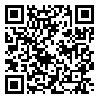Volume 4, Issue 7 (2017)
QHTS 2017, 4(7): 95-123 |
Back to browse issues page
Download citation:
BibTeX | RIS | EndNote | Medlars | ProCite | Reference Manager | RefWorks
Send citation to:



BibTeX | RIS | EndNote | Medlars | ProCite | Reference Manager | RefWorks
Send citation to:
The application of vocabulary’s referencing meanings in translation process of Nahj al-Balagha. QHTS 2017; 4 (7) :95-123
URL: http://qhts.modares.ac.ir/article-10-11380-en.html
URL: http://qhts.modares.ac.ir/article-10-11380-en.html
Abstract: (9866 Views)
One of the most important principles in the fields of semantics and translation technology is the recognition of the type of applied vocabulary in one language. If we count the source language words as the smallest translation unit, meanwhile, we will be faced with two types of general meanings: referential meaning and context meaning. The referential meaning is the first guide of translator to achieve equality in translation. In this article we have tried to, while explaining the importance of recognizing the meaning of referral in achieving accurate translation in religious texts, using descriptive-analytical method, criticize and analyze the performance of five Persian translations of sermons of Nahj al-Balagha Includes translations of Mr. Jafari, Dashti, Shahidi, Faqihi and Feyzul Islam in the translation of referential meanings of one hundred and twelve words. The result of research indicates that although the knowledge of referential meaning of words is easier than context meaning, but the translation of a work into another language is facing challenges. Some of these challenges include the lack of knowledge of structure of word and confusion in terms of form and meaning of the source language words with other words. The existence of such issues have causedto the translation of Nahj al-Balaghabe awayfrom theequality in translation.
Article Type: مقاله پژوهشی |
Received: 2016/03/31 | Accepted: 2017/05/23 | Published: 2017/09/5
Received: 2016/03/31 | Accepted: 2017/05/23 | Published: 2017/09/5
| Rights and permissions | |
 |
This work is licensed under a Creative Commons Attribution-NonCommercial 4.0 International License. |







